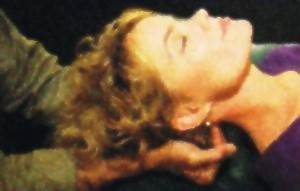Craniosacral Therapy
Craniosacral therapy (CST), also called cranial osteopathy, is a light, non-invasive, hands-on treatment that relieves tension and leads to the relief of pain and improves the functioning of the body.

The stresses and strains of life cause the body to compensate in different ways and one result of this can be the tightening of the body tissues that cause the system to distort. The Cranio Sacral Therapy practitioner can detect these distortions by using a light touch to test for ease of motion and the rhythm of the cerebrospinal fluid. Techniques involving a gentle touch are then used to release the restrictions in the system and restore normal functioning.
This specialized treatment approach focuses on the system comprised of the brain, spinal cord, meninges, cranial bones and sacrum. The system contains fluid that moves with slight fluctuations and causes subtle but perceptible, rhythmic movements of the cranial bones. The therapist senses and works with these fluctuations by using gentle pressure on the cranial bones and spine. As a result, tension in the body is reduced and balance is restored to the central nervous system.
Cranial osteopathy was originated by William Sutherland, an American osteopath, at the end of the 19th century, who discovered subtle movements in the bones of the cranium. He also discovered that these movements are rhythmic and that these movements are linked with the health of the subject. He continued work in this field for several decades. The technique of healing through this type of therapy was further developed by John E. Upledger, osteopathic physician at Michigan State University, who developed his own style of treatment.
More information on craniosacral therapy can be found at the website of the Upledger Institute.
Our therapist is Rosalin Peacock who has studied through the Upledger Institute for several years.